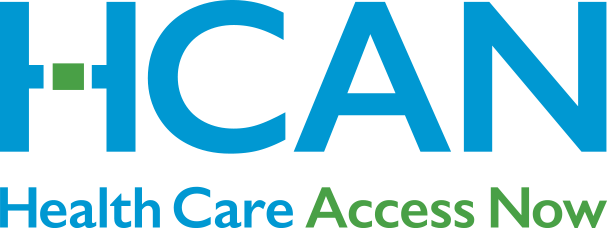PRESS RELEASE: HCAN updating Hub Model used to assess and serve participants
Health Care Access Now (HCAN) collaborates with the Pathways Community Hub Institute, so its Community Health Workers (CHWs) can use a proven model as a framework for community-based care coordination.
CHWs use Hub “pathways” to provide education and resources to participants in the program. The Hub has updated its model to better capture data and understand the ways in which CHWs mitigate social determinants of health. Additionally, this new version of the Hub will create a more participant-centered experience.
- Changes to the model include pathway edits, combining some pathways and separating others.
- Certain pathways, such as tracking substance use, take on greater emphasis in the update.
- Updates include more in-depth collection of data points and care.
HCAN trains and dispatches CHWs to work one-on-one with marginalized community members. This update will allow CHWs to focus on determinants of health that most directly affect participants, thereby increasing effectiveness.
Health Care Access Now (HCAN) is the Pathways Community Hub Institute director for the region. HCAN’s Community Health Workers (CHWs) use the Hub model to better target and eliminate program participants’ barriers to positive health outcomes.
PCHI recently revised the Hub to allow CHWs to concentrate more on conversation, thereby streamlining the process and moving participants to its center. One major change is a documentation update, but the most consequential shift is to the standard “pathways” CHWs use to identify social determinants of health affecting participant outcomes.
“The pathway changes emphasize participant issues PCHI has identified as needing increased importance,” says Bettie Johnson, Associate Hub Director at HCAN. “There are now 21 standard pathways.”
Some former pathways have been split to offer more specified guidance to participants in the program. A new pathway, Oral Health, has been created, pulled from the General Health pathway, for example. Transportation Disparities and Food Security are also given greater emphasis, pulled from the Social Service Referral pathway.
Another big change has been the way in which CHWs work with participants around medications. Now, there are three pathways: Medication Screening, Medication Reconciliation, and Medication Adherence. This modification arose from the recognition that many program participants see multiple providers from different specialties, which can result in conflicting medications being prescribed. These three pathways will help the CHW work with the participant to confirm with pharmacists and caregivers that substances are being used appropriately.
“This update should encourage a culture of active program participation,” Johnson says. “Participants—formerly known as clients—will understand that they can self-advocate and be active in their own health care.”
HCAN will be rolling out Hub changes gradually over the next few months with an official “live” date of July 1, 2023, so both CHWs and participants can adjust to the new pathways and procedures. This update will change the way CHWs work with participants to accentuate follow-through and provide more in-depth tracking of data points and care. While many of the changes are administrative, a more participant-centered approach should also increase positive participant interactions.

